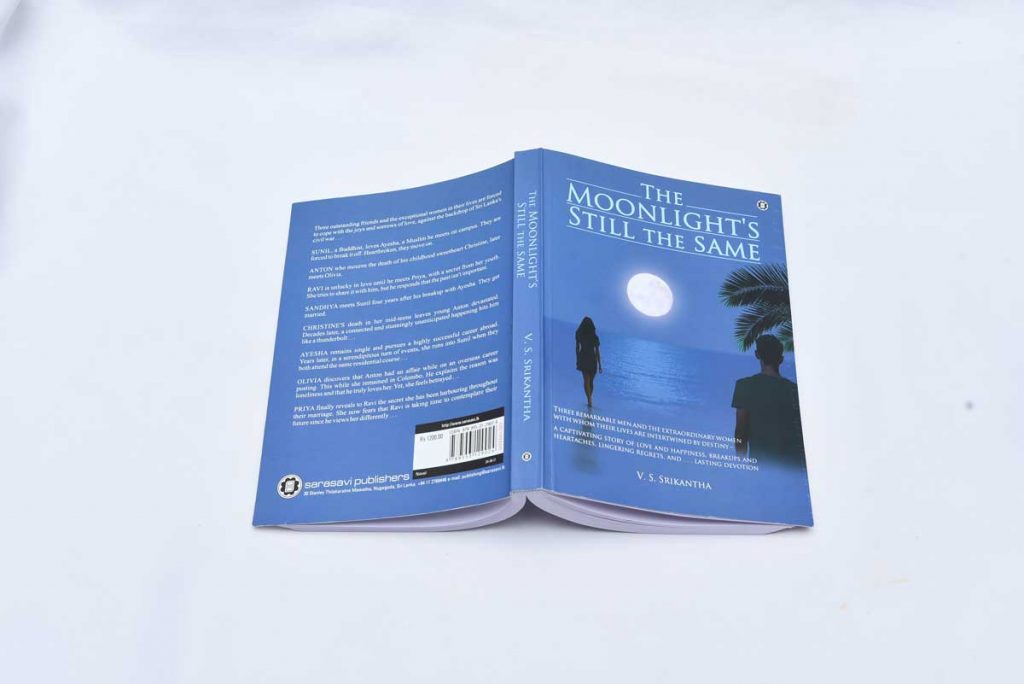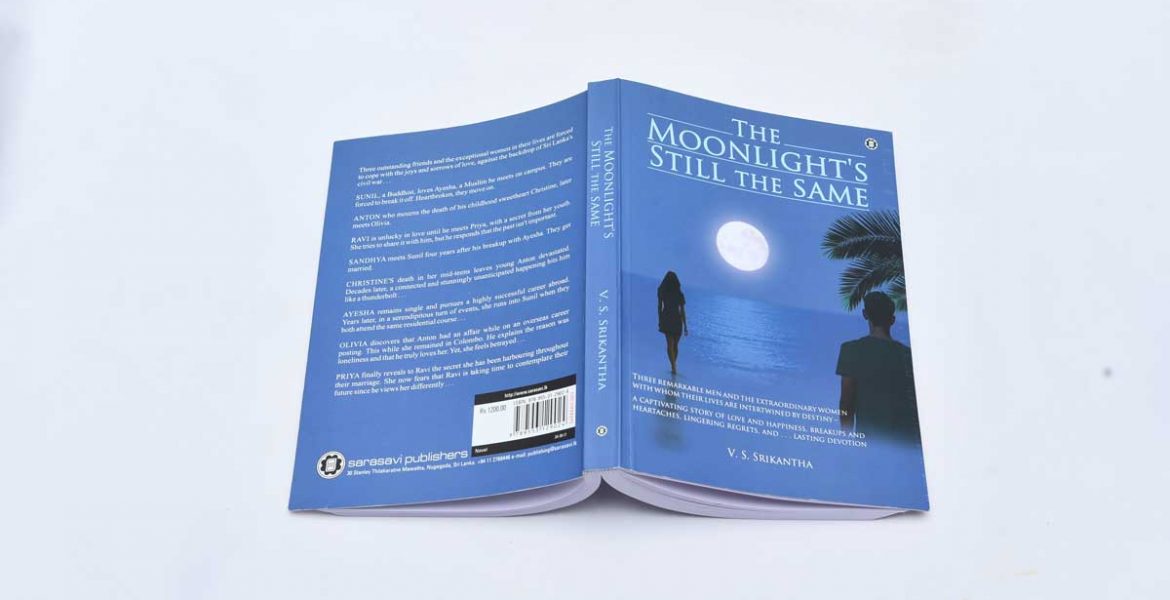

V.S. Srikantha
Sarasavi Publishers
330 pages | Rs. 1,200 | Published in Sri Lanka (2023)
Christopher Marlowe
“Whoever loved, that loved not at first sight?”
‘The Moonlight’s Still The Same’ directly embodies Christopher Marlowe’s portrayal of emotions as an irresistible force, which continues to remain mysterious and unexplainable in its influence over people. With the characters referencing this idea, it serves as a vivid illustration.
Marlowe’s poem (Who Ever Loved That Loved Not At First Sight?) from which the quote was taken, primarily explores love at first sight and the novel’s characters exemplify the notion that love is beyond our control. Love happens spontaneously and individuals have no say in who they fall in love with. The book describes it as “fate overriding our will in matters of love – it’s beyond our control.”
Srikantha’s ‘The Moonlight’s Still The Same’ revolves around three men: Sunil, Anton and Ravi, and their interconnected relationships with women. Narrated in the third person, the novel categorises these stories, presented through time shifts between past and present, with the future as uncertain expectations.
Sunil’s character is defined by his love for his college sweetheart Ayesha, whom he had to part with due to parental opposition based on ethnic disparities. Later, he marries Sandhya, but he acknowledges that his college love remains deep in his heart and begins to resurface during the progression of the plot.
Anton goes through a tragic teenage love with Christine but later marries Olivia, to whom he professes unwavering love despite having an affair with a Russian associate Tanya, resulting in a child. On the other hand, Ravi, after an unfortunate relationship with Diviya, falls for Priya and marries her, accepting the secret of her past, which strengthens their marriage.
Throughout the novel, Srikantha explores complex human relationships through these three central figures. Emotions add layers of complexity to relationships, as evident in each story narrated in ‘The Moonlight’s Still The Same.’
The book not only delves into the complexities of human nature through emotional encounters but also sheds light on themes such as acceptance, inevitable attractions, love, portrayal of women, ethnic conflicts and more.

Ravi’s character shines through his remarkable capacity for understanding and acceptance. His willingness to embrace Priya’s secret, despite her fear of how it might alter his perception of her, underscores his empathy and open-mindedness. Furthermore, his reaction to Diviya’s unilateral decision to end their relationship reflects a genuine hurt but also a recognition of her autonomy in making choices.
In a similar vein, Ravi’s stance with his mother, when his father disapproved of her employment, reveals his commitment to fairness. He questioned why his mother alone should be the one to make sacrifices, demonstrating his concern for equitable treatment within his family.
Importantly, ethnic conflict appears to label Sunil and Ayesha as star-crossed lovers, obstructed by the constraints of their time. Their love bloomed during a period when traditional mindsets prevailed, adding to the preciousness of their love due to its unfulfilled nature.
Sunil’s marriage to Sandhya and, to a greater extent, Anton’s affair with Tanya, highlight the irresistible attraction between men and women as an intrinsic aspect of human nature that’s deeply rooted in our biology, psychology and evolution.
In exploring the intricate tapestry of human relationships, ‘The Moonlight’s Still The Same’ serves as a captivating reflection of life’s most profound and enigmatic aspects. Srikantha’s portrayal of love, attraction and the interplay of emotions echoes the timeless question posed by Christopher Marlowe: Can one truly love without experiencing that magical spark at first sight?
The book’s characters vividly illustrate that love, in all its unpredictability, defies our attempts to control or direct it. It is a force of nature, tugging at the hearts of individuals, often transcending time and circumstances. Whether its Sunil’s enduring affection for Ayesha, Anton’s complex relationships or Ravi’s embrace of Priya’s past, the novel underscores the undeniable power of love.
As we journey through the pages of this work, we witness the ever-present complexities of human nature and the inescapable confrontations of emotions. These emotions bring forth not only the conflicts of attraction and love but also broader themes such as the portrayal of women, ethnic disparities and the enduring struggle between tradition and change.
This novel masterfully shows that, like any timeless love story, what stands in their way is the ever moving river of time, impacting and shaping their lives.
The writer exhibits a commendable storytelling ability, effectively weaving intricate narratives within the pages of the novel. Leaning towards a simpler writing style, the writer manages to captivate the reader with a rich tapestry of emotions and connections.
The book serves as a compelling reminder that the mysteries of the heart are as powerful and elusive today as they were in the days of Marlowe. It is an exploration of the human condition, an intimate journey into the depths of our souls where love, attraction and emotions continue to shape our lives in profound and unpredictable ways.


